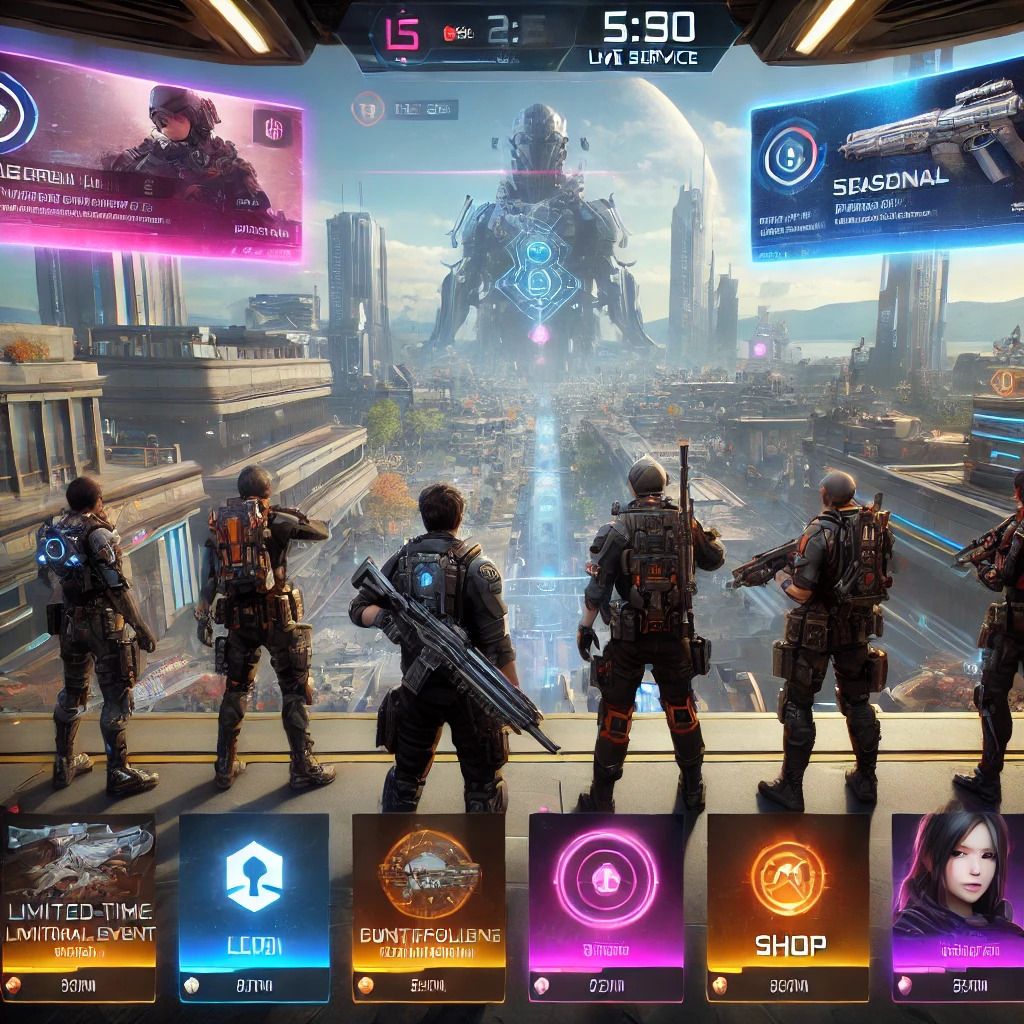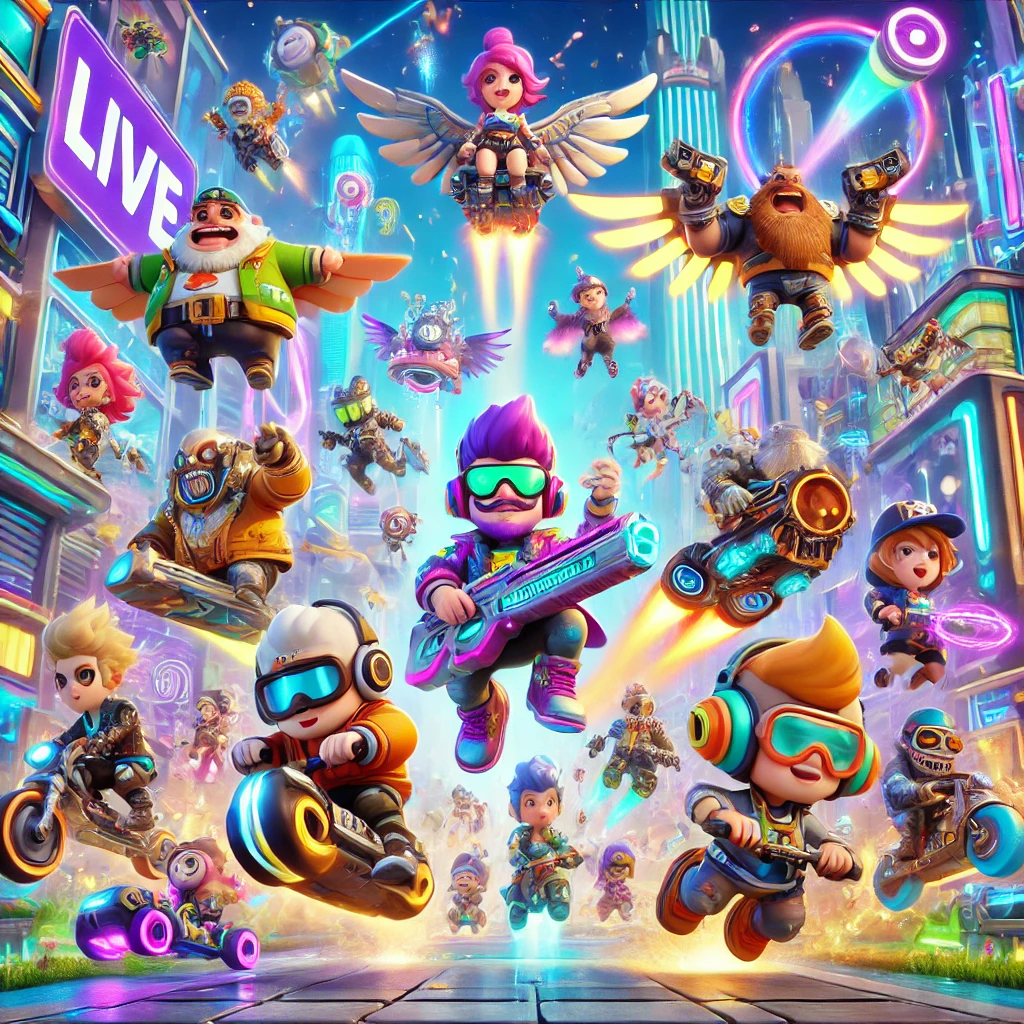Table of Contents Show
Live service games. Just hearing those words makes my eye twitch a little. They’re everywhere now – those games that don’t really ever “end,” that try to lure you in with the promise of constant updates, endless content, and vibrant, active communities. To some people, that might sound like a dream come true. To me? It feels like a never-ending nightmare.
Now, don’t get me wrong. There was a time when I enjoyed the idea of live service games. I mean, it sounds great on paper: a game that constantly evolves, with developers who respond to the community and keep adding new things to explore and experience. But in practice? That’s not how it usually goes. Instead, these games come with a host of issues that completely ruin what could otherwise be great experiences. And while I recognize that some folks love these games, I just can’t get on board anymore.
The Endless Grind
Let’s start with the grind. Live service games thrive on it. They’re like an endless treadmill where the developers dangle shiny new items, cosmetics, or power-ups just out of your reach. You play for hours upon hours, chasing that next unlock or the next level of progression, only to find out that once you finally reach it, there’s another carrot waiting for you to chase.
I get it – some people enjoy the grind. They like having something to work toward in a game. But when the grind feels like it’s been artificially inflated just to keep me playing longer, it stops being fun and starts feeling like a second job. It’s not just about playing because I’m enjoying the experience. It’s about playing because if I don’t, I’ll miss out on that limited-time event, that exclusive skin, or that seasonal progression. And suddenly, a game that I was supposed to enjoy becomes something that I have to do. And if there’s one thing I hate, it’s feeling like I’m obligated to play a game just to keep up.
FOMO: The Dark Side of Limited-Time Content
Fear of Missing Out (FOMO) is something live service games exploit mercilessly. There’s always some limited-time event, some rare cosmetic that’s only available for a short window, or some seasonal pass that you need to finish before the deadline. It feels like a constant race against the clock.
The problem with this? Life gets in the way. There are days – or even weeks – when I just don’t have time to log in and grind through the content. But when live service games operate on this limited-time mentality, it adds pressure. Missing out on exclusive items or content feels bad. It’s like the game is holding fun behind a time-gated wall, and if you can’t be there at the right moment, too bad – you’re out of luck.
And it’s not just cosmetics. Sometimes, these limited-time events offer real, tangible in-game benefits that make your character stronger or more capable. If you miss those, you can find yourself at a disadvantage compared to the players who could log in during those time-sensitive windows. The entire structure just feels designed to make you constantly anxious about missing out on something. Gaming is supposed to be fun and relaxing, not a source of stress.
Monetization Madness
Oh boy, where do I even start with the monetization in live service games? It feels like every game these days is trying to squeeze money out of you at every possible turn. Whether it’s through season passes, microtransactions, or loot boxes, live service games are masters of making you feel like spending money is the only way to stay competitive or look cool.
The cosmetic angle is one thing. I get that some players like to customize their characters with unique skins or emotes, and I’ve spent a few dollars here and there on cosmetics that I genuinely liked. But the problem is when these games push you so hard toward spending money that it stops feeling optional. Progression can be so slow or tedious that you’re almost forced to pay if you want to advance at a reasonable pace. And don’t even get me started on loot boxes – those random reward systems that feel more like gambling than gaming.
And let’s talk about season passes for a second. You buy the base game – sometimes even for full price – and then immediately, you’re asked to shell out for a season pass if you want to get the full experience. And here’s the kicker: it’s not just one season pass. These games go on and on, constantly cycling through seasons, meaning that if you want to keep up with the content, you’re shelling out money every few months. It feels like I’m constantly being nickel-and-dimed just to enjoy a game I already paid for.
Incomplete Games on Launch
Another big problem I have with live service games is that they often launch in an incomplete state. Developers will release the game with a promise that more content will come later. “Don’t worry,” they say, “this is just the beginning. We’ve got tons of updates planned!”
But why should I have to wait? If I’m buying a game, I want a full experience right out of the box, not a skeleton of a game that I’m supposed to “wait” for. It feels like more and more games are launching with missing features, bugs, or unfinished content, with the expectation that the community will just hang around until they finish building the game post-launch. And that’s even assuming the updates are worth the wait.
Sometimes, these updates just don’t deliver. They’re buggy, unpolished, or worse – they don’t happen at all. Live service games sometimes promise the moon and fail to deliver even a fraction of it. And by the time the game finally does become what it was supposed to be, the player base has moved on, and the game is practically dead.

The Community Pressure
Let’s be real – live service games live and die by their communities. And sometimes, that’s not a good thing. When you’re playing a game that’s constantly evolving, the community plays a huge role in shaping the direction it goes. But not every community is the same, and not every player wants the same things.
One of the most frustrating things I’ve encountered is when a live service game caters to the “hardcore” crowd. Balancing games is tough, but it feels like so many live service games end up focusing on the needs of the most vocal players. These are usually the ones who play for hours on end, mastering every little aspect of the game. But when developers make changes to cater to these players, the more casual crowd gets left behind. The game gets harder, more competitive, and less accessible.
And this isn’t just about difficulty. Sometimes, the community drives a game to become something different than it was at launch. Developers might introduce new mechanics or features to appeal to a subset of players, and before you know it, the game you initially loved has changed into something you don’t recognize anymore. It’s frustrating to feel like a game you enjoyed has shifted away from what made it fun in the first place, all because a vocal portion of the community demanded it.
Burnout is Real
One of the biggest problems with live service games is burnout. With constant updates, seasonal events, and a never-ending flow of content, it’s easy to get overwhelmed. At first, it feels exciting. There’s always something new to do, and the game feels alive. But after a while, that excitement fades, and it starts to feel exhausting.
I’ve lost count of how many live service games I’ve played where I’ve reached a point of complete burnout. When you’re always trying to keep up with the latest event or the newest update, it feels like you can never truly take a break. Because if you do, you’ll fall behind, and catching up will be even harder. It’s a vicious cycle, and eventually, I just have to step away.
The irony is that the very thing that’s supposed to make live service games appealing – the constant updates and new content – ends up being what drives me away. Sometimes, I just want to finish a game and move on. I want closure, not a game that drags me back in every few months with new things to grind for.
Where’s the Story?
One of my favorite things about games is the stories they tell. I love getting lost in a rich narrative, with memorable characters and exciting plot twists. But live service games often seem to sacrifice storytelling for the sake of keeping the game going.
The focus is usually on the multiplayer experience or the endless grind, and while some live service games try to tell a story, it often feels like an afterthought. The narratives are fragmented, spread out over seasons, or delivered through disconnected bits of lore that never really come together. It’s frustrating because it feels like the potential for great storytelling is always there, but it’s rarely realized.
I miss the days when I could sit down with a game, play through a well-crafted story, and feel like I’d experienced something meaningful. With live service games, it often feels like the story is secondary to keeping players engaged through gameplay mechanics and monetization schemes.
Conclusion: Give Me Finite Games
At the end of the day, I think the biggest reason I hate live service games is that I miss the satisfaction of completing a game. I miss the feeling of finishing a story, achieving a clear goal, and then moving on to something new. With live service games, there’s no end in sight. The grind is endless, the monetization feels aggressive, and the constant updates and changes often leave me feeling burnt out and disconnected.
So while I understand the appeal for some players – those who love the idea of a game that never ends and constantly evolves – it’s just not for me. Give me a well-crafted, finite experience any day of the week. Let me enjoy a game, finish it, and then move on with my life. Because honestly? I’m just tired of the endless grind.









